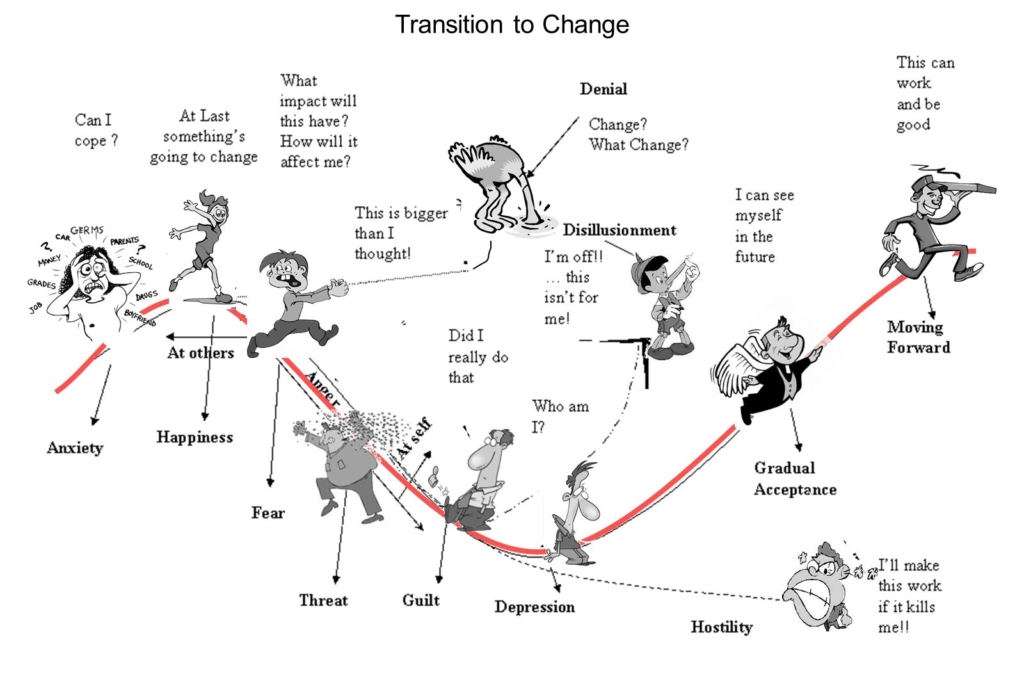The process of change
“If you always do what you’ve always done, you’ll always get what you’ve always got.” (Anonymous)
Many of you know what I do: I am a clinical psychologist and psychotherapist. My work is extremely interesting, it requires improving myself not only on a professional but also on a personal level. It is based on building close relationships with other people and working with the process of change. And this is what I would like to share with you today – why is change so difficult for many of us? Why for many of us sometimes even the word “change” causes fear and paralysis? Why, despite the pain and suffering, do we feel that we are unable to make changes? Very often it even happens that we choose to stay in a painful situation so that nothing changes. Why?
I will not hide the fact that change IS DIFFICULT. I think we should start with the fact that a lot of people think about change as something sudden, one moment, a point in time when everything suddenly changes. And such a change is not – the change is accompanied by a process, sometimes lengthy. Change requires dedication, time, energy, repetition and perseverance. Change is related to something new, unknown – and that is what causes fear. At the beginning of the change process, you really have to make an effort not to choose the path that is well-known – to not react in the same way, not repeat the same thinking process. This well-known path is very easy for us…. so how do you deal with the fear associated with change?
There is one very cool exercise that I encourage many of my clients to do – and now I would like to encourage you too. Take a piece of paper and crayons (yes – we will draw ![]() ). To start with, I would like to ask you to draw a bridge (whatever comes to your mind) and then draw yourself – are you on your bridge? where – at the beginning or, perhaps, in the middle? Maybe you are standing in front of the bridge, not on it? Now imagine that one side of this bridge represents your current reality. Stop here for a moment and write down everything that is related to your current situation (for example: I feel bad, I feel deeply sad, violence, gray, loneliness). The other side of the bridge is the place you want to get to – in other words, how would you like your reality to look after the change. Here, too, I would like you to write what you would like to feel or experience in a new situation (maybe freedom, joy, fulfilment, peace, friends).As you probably already guessed, the bridge is a symbol of the process of change – sometimes it seems unstable, sometimes it shakes a little, maybe some places on that bridge are cracked or hollow. From this side of the bridge the other side looks blurry and unclear. This journey into the unknown at first seems scary, uncertain so at the beginning stepping on the bridge involves some leap of faith. But believe me, it is worth overcoming fear to get to the other side because as we move along on the bridge things on the other side start to take shape and we can see them more clearly. This other side… that’s where you are waiting for what you strive for. So maybe it’s worth taking that risk? That’s one of many reasons why going to therapy can be beneficial – you don’t need to take this journey alone but with somebody who will support you at every step you take.
). To start with, I would like to ask you to draw a bridge (whatever comes to your mind) and then draw yourself – are you on your bridge? where – at the beginning or, perhaps, in the middle? Maybe you are standing in front of the bridge, not on it? Now imagine that one side of this bridge represents your current reality. Stop here for a moment and write down everything that is related to your current situation (for example: I feel bad, I feel deeply sad, violence, gray, loneliness). The other side of the bridge is the place you want to get to – in other words, how would you like your reality to look after the change. Here, too, I would like you to write what you would like to feel or experience in a new situation (maybe freedom, joy, fulfilment, peace, friends).As you probably already guessed, the bridge is a symbol of the process of change – sometimes it seems unstable, sometimes it shakes a little, maybe some places on that bridge are cracked or hollow. From this side of the bridge the other side looks blurry and unclear. This journey into the unknown at first seems scary, uncertain so at the beginning stepping on the bridge involves some leap of faith. But believe me, it is worth overcoming fear to get to the other side because as we move along on the bridge things on the other side start to take shape and we can see them more clearly. This other side… that’s where you are waiting for what you strive for. So maybe it’s worth taking that risk? That’s one of many reasons why going to therapy can be beneficial – you don’t need to take this journey alone but with somebody who will support you at every step you take.

